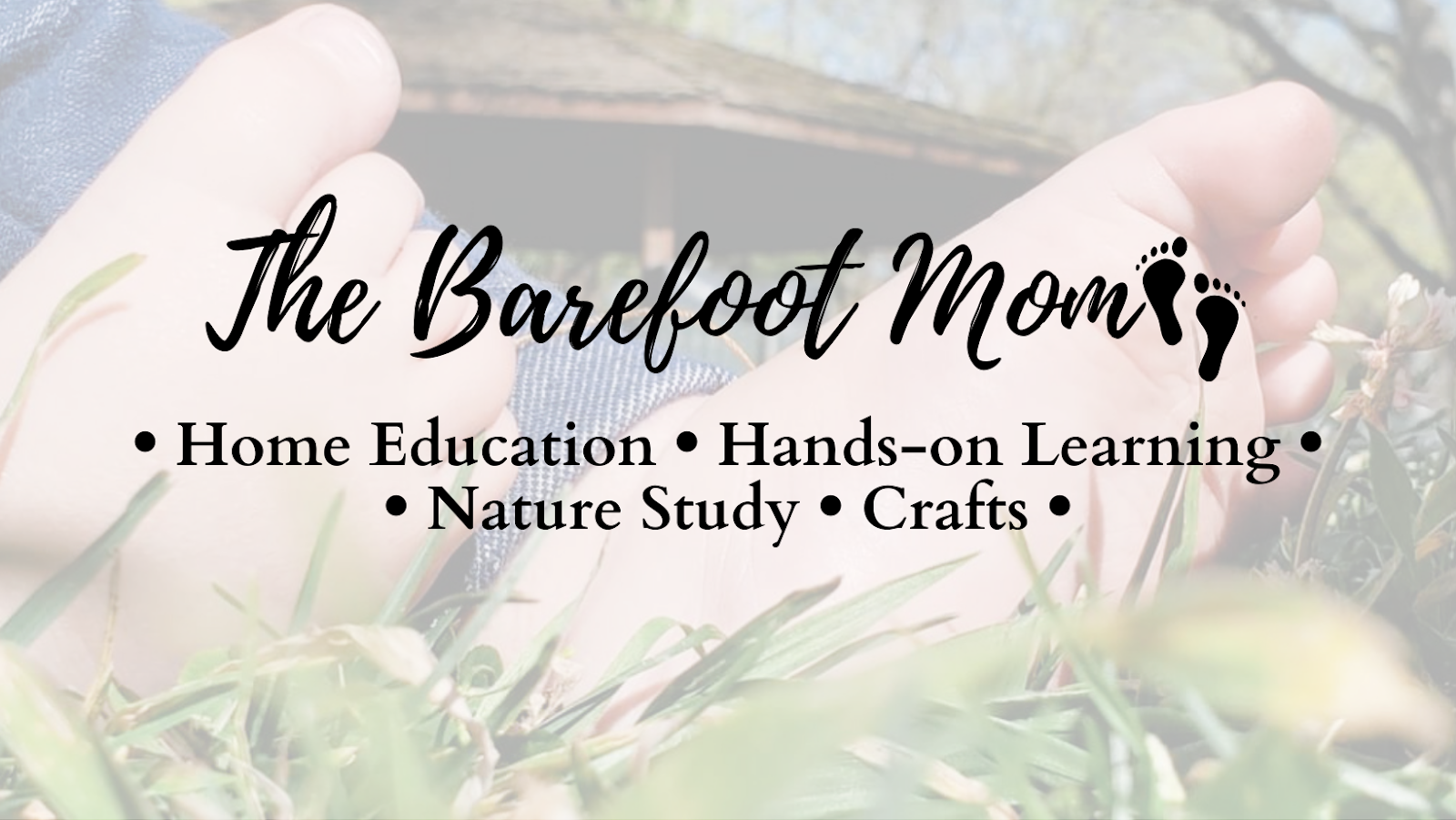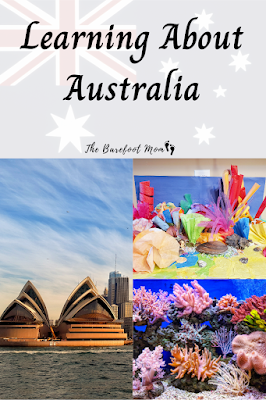Our final country we studied this year was Australia. It was an especially fun country to learn about because of it's unique wildlife and ecosystems. My kids loved learning about the Great Barrier Reef and all the amazing sea life that lives there.
We only made it through about half of the countries I had planned to get through this year because we ended up finding so many interesting things to learn about. We started with several countries in Europe and then moved on to Aisia and Australia this year. Next year we will be learning about a few countries in Africa, then we'll finish up with South and Central America. You can find the links to all the countries we've already covered here: Learning About the Countries of the World.
Basic Information
Australia is considered both an island and the smallest continent. It's located in the south Pacific Ocean. The terrain is mainly low plateau and desert, with some fertile plains in the southeast. The climate ranges from subtropical in the north to cooler mild temperatures in the south.
Population- 25.7 million
Size- 2.97 million square miles (slightly smaller than the continental United States)
Currency- Australian dollar
National Anthem- Advance Australia Fair
National Animal- Kangaroo
Flag-
Famous Places and Landmarks
The Great Barrier Reef- The Great Barrier Reef is an incredible series of ocean reefs off the northeastern coast of Australia. It's home to an amazing variety of sea life including around 360 species of coral, thousands of different types of sponges, sea stars, clams, oysters, octopuses, sea turtles, rays, sea snakes, dugong, around 1,500 species of fish, and more.
You can learn more about the reef with these short YouTube videos:
-Check out the Great Barrier Reef! from SciShow Kids
-Exploring Oceans- Great Barrier Reef from National Geographic
-How the Great Barrier Reef Formed from Nat Geo Wild
The Sydney Opera House- The Sydney Opera House is performing arts center located in Sydney, Australia. It is famous for it's unique shell like architecture.
15 Interesting Facts About the Sydney Opera House
Kakadu National Park- The Kakadu National Park in northern Australia is the country's largest national park, consisting of over 7,600 square miles. It is home to many iconic Australian animals such as kangaroos, wallabies, salt water crocodiles, dingoes, bandicoot, and black flying foxes.
You can learn more about the park with the following videos:
-Travel Guide- Kakadu National Park
Uluru- Uluru is a massive limestone rock formation in Australia's Northern Territory. The aboriginal people of the area consider it a sacred place.
The Significance of Uluru to Australian Indigenous Culture
Recipes
Caramel Slice: For our Australian cooking project we made a layered desert called a caramel slice. It has a cookie like base layer, a thick creamy caramel layer in the middle, and a chocolate layer on top. It was absolutely amazing! Here's the recipe we used: Caramel Slice.
Other Australian Recipes to Try:
Australian Wildlife
Australia is home to some amazing animals, many of which cannot be found anywhere else in the world. Two thirds of the world's over 330 marsupial species are found exclusively in Australia including kangaroos, wallabies, koalas, and wombats. You can learn more about marsupials and Australia's other wildlife with the resources below.
15 Best Know Unique Wild Animals of Australia
Why do Kangaroos Have Pouches? Video from SciShow Kids
Studying Some of Australia's Marsupials with Coyote Peterson video from Animal Planet
Australian Animals video from Socratica Kids
Crafts and Activities
Coffee Filter and Tissue Paper Coral Reef Diorama
For this activity you will need:
-Coffee Filters
-Tissue Paper
-Markers
-Tape
-Scissors
-A piece of cardboard to use as a base (the piece we used is approximately 12 inches by 18 inches)
Start by looking at pictures of coral reefs and various types of coral. We just did a couple quick Google Image searches. Then try to recreate some of the types of corals you saw using coffee filters and tissue paper.
We made our coffee filters colored by coloring them with markers- just large blotches of different colors. Then we gently sprayed them with a water bottle to blend the colors together. Then we set them aside to dry.
Several coffee filters bunched together looks like leaf coral.
Tissue paper wrapped into tubes makes excellent tube coral.
You can fan fold tissue paper for fan corals.
Cover your cardboard base with your various tissue paper and coffee filter corals and tape or glue them into place.
Add extras like seashells, sand, and sea glass if you want.
Blue Spotted Jellyfish Craft
While browsing books about Australia at the library, my girls came across a book about the blue spotted jellyfish, also known as the Australian spotted jellyfish. It is native to the ocean waters around Australia and as far north as Japan.
The book ended up inspiring an entire day spent learning all about jellyfish, culminating in the cool jellyfish craft that you see below. You can find step by step instructions plus lots of links to videos and other resources for learning all about jellyfish here:
Activities and Resources for Learning About Jellyfish.
Additional Resources
Australia- Country Profile from National Geographic Kids
Australia Facts for Kids at Kids World Travel Guide
Australia- Destination World video from Nat Geo Kids
If you enjoyed this post check out my other country unit studies:
Learning About the Countries of the World
Follow me on:











Comments
Post a Comment